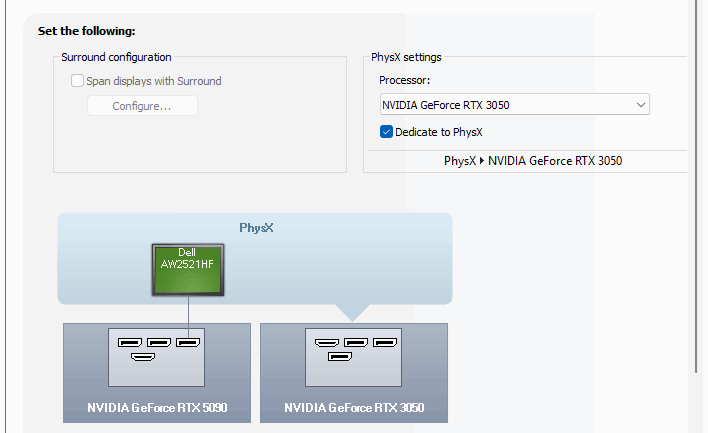GeForce RTX 5090 Paired With A 3050 Gives Classic Games A Huge Boost
To explain, a great many classic PC games functioned as showcases for NVIDIA's GPU-accelerated physics tech, yet most of those games will no longer run playably on even a mighty GeForce RTX 5090, as the physics workload gets shunted to the CPU. Despite that modern CPUs with powerful SIMD extensions can easily handle these sorts of physical simulations, NVIDIA's CPU-based implementation of its PhysX libraries is extremely unoptimized, and some of these old games can drop to single-digit frame rates when PhysX effects are employed.
One way to deal with this is to simply install a GeForce GPU that does support 32-bit PhysX alongside your Blackwell card. If you're dubious on the idea, you don't have to be—Reddit user /u/jerubedo specifically tested Mirror's Edge, Mafia II, Batman: Arkham Asylum, Borderlands 2, and Assassin's Creed IV: Black Flag. In most of the games, enabling PhysX chokes performance down to the low double digits, but with a GeForce RTX 3050 low-profile card installed alongside his RTX 5090, performance shot back up into the triple digits.
It's notable (albeit not surprising) that a GeForce RTX 3050 is enough to handle the physics workload of these games; even that little GPU has more compute than any graphics card released around 2010. Curiously, the user says that in 64-bit PhysX titles the physics workload ends up on the GeForce RTX 5090 regardless of the fact that the RTX 3050 is set as the PhysX processor in the NVIDIA Control Panel. This seems like a bug to us, and the user laments it as he wanted to see how the little 6GB GPU held up against the PhysX workload of newer games.

Many people suggested this solution when the original news came out; a commenter on our story jokingly suggested installing an RTX 4090 alongside your new RTX 5090 to handle PhysX. Of course, that's absurd, and it's arguable that having to install a second graphics card just to run physics is wrong just on the face of it. Greybeards might find it nostalgic, though, recalling that NVIDIA's PhysX originated as an Ageia technology that was actually designed to run on a specialized PCI add-in card.
Still, we're left wondering why NVIDIA has decided to remove this support from its latest GPUs. There doesn't really seem to be any particular technical reason you couldn't run 32-bit PhysX on a Blackwell GPU, and it honestly seems more like an oversight, as if someone didn't realize that skipping 32-bit CUDA enablement on the latest GPUs would break PhysX in older games. Hopefully, NVIDIA reverses course on this decision.



